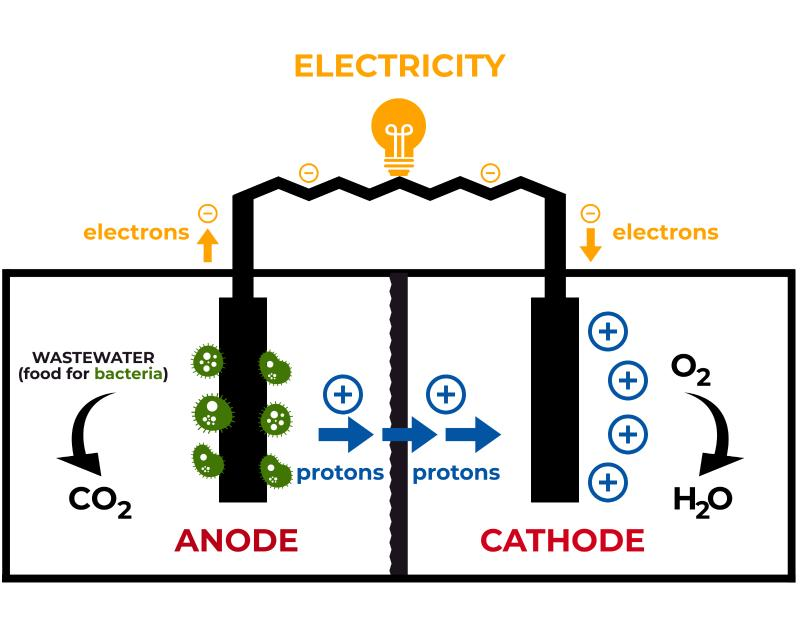Scientists from the Hellenic Foundation in Athens are working on a bio-electrochemical system of microbial fuel cells that uses bacteria to turn sewage into electricity
To create renewable energy from wastewater. That’s the ambitious project of Greek scientists, in collaboration with UK researchers, funded by the Hellenic Foundation for Research & Innovation in Athens. The scientists are developing “microbial fuel cells”, bio-electrochemical systems that use bacteria to convert organic and inorganic compounds found in wastewater, to produce electricity.
The Greek team is testing the technology with the backing of a loan to the Hellenic Foundation from the European Investment Bank. It’s the kind of innovative product that will be needed to meet international climate targets.
The project brings together researchers from different fields to tackle daunting scientific and technological challenges and involves three universities: the National Technical University of Athens, the School of Sciences of the National and Kapodistrian University of Athens and the Bristol BioEnergy Centre at the University of the West of England.
“Any efforts to develop and implement strategies for resource recovery, renewable energy generation or a more efficient use of existing resources are very important,” says Asimina Tremouli, researcher in the Department of Synthesis and Development of Industrial Processes at the National Technical University of Athens School of Chemical Engineering, who’s the Principal Investigator of the project.
The researchers’ earlier designs experienced electrochemical losses that limited the overall performance of the system. Now they’re introducing new materials to reduce implementation costs.
The new design model would represent a sustainable alternative to wastewater treatment and contribute to reduced pollution.
What is a microbial fuel cell?
Backed by a €180-million loan from the European Investment Bank signed in 2016 as well as Greek government financing, the Hellenic Foundation is running a range of research proposals from talented young scientists.
Here’s how the microbial fuel cell works.
The cell consists of an anode and a cathode, physically separated by a membrane. Microorganisms in the anode oxidise the underlying organic substances present in the wastewater, releasing protons and electrons as part of their anaerobic respiration. Protons flow through the membrane into the cathode electrode and electrons flow through the external circuit, producing a flow of electric current.

The multidisciplinary team is working to optimise a high-yield microbial fuel cell, which could be replicated to create a stack of cells. Asimina Tremouli calls these “smart stacks,” because of a unique feature that prevents the voltage being reversed, as often happens when electron devices are connected. The smart stack would enable a scale-up of the technology, together with possible commercialisation on a wide scale. This would be accomplished by joining significant “know-how” provided by the National Technical University of Athens (for its innovative design and materials) and the School of Sciences of the National and Kapodistrian University of Athens (for its materials) and University of the West of England (for its materials and stacking strategies)
Forget fossil fuels
The results provided by the new microbial fuel cells are quite promising and the technology, whose test phase should be completed in the next five years, could be integrated into existing wastewater treatment plants or work as individual power units. It could also serve as a decentralised system in isolated areas that aren’t connected to municipal sewage networks or in small communities with less than 2,000 inhabitants where electrical infrastructure is often insufficient.
As well as cutting fossil fuel use, the decentralised options would boost local economies and create jobs.
